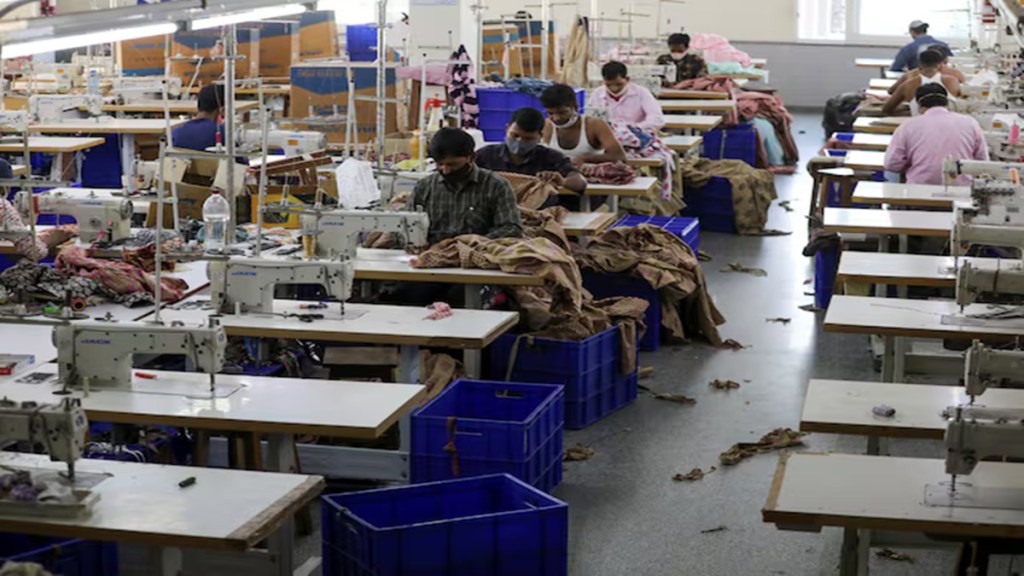By N Chandra Mohan
Boosting the share of manufacturing to 25% of gross domestic product (GDP) is an important aspirational objective of India’s policy establishment. So, too, is becoming an advanced economy by 2047 like the East Asian miracle economies. During the last 10 years, the ruling dispensation has adopted several measures in this regard like the Make in India programme, production-linked incentives, and generous tax reliefs. As preparations for the Union Budget for FY26 are underway, there are deliberations on revitalising manufacturing with assistance linked to employment generation and fresh investments. However, despite these efforts to raise the share of manufacturing, it has stubbornly hovered around 16% of GDP since FY15.
Instead of sops to bolster manufacturing, it might perhaps be more appropriate to learn from the experience of East Asian miracle economies, including China. They became global export-oriented manufacturing hubs and progressed to higher levels of development by addressing preconditions at the level of human development. India, too, must do so to realise its aspirational objectives. Economies like South Korea, for instance, made huge investments in education that improved literacy and schooling of its population. This enabled it to grow rapidly for long periods of time and make a successful transition from a developing to a developed economy. All these East Asian economies had a high baseline of human development.
India’s challenge is indeed daunting as only 5% of its workforce has received formal skill training as against 80% and 96% in countries like Japan and South Korea. Although India has the advantage of a predominantly youthful labour force, this demographic dividend can turn into a curse if they lack the skills to be gainfully absorbed in manufacturing. More so, as the policy establishment has unveiled ambitions to become a leading player in sunrise industries like semiconductors, green hydrogen, artificial intelligence, robotic hardware, besides labour-intensive manufacturing. Clearly, the overriding policy focus must be on upgrading human capital so that it is more in alignment with the country’s ambitions for manufacturing.
The contrast with China is striking as its better educated workforce facilitated its rise as a global export-oriented manufacturing power. Unlike India’s top-down approach, China adopted a bottom-up policy of focusing on primary mass education from the early 1900s, prior to communism. This shifted to secondary education during the 1960s-80s under communism, and later to tertiary education during the post-communist era. Nearly 25% of China’s students at the secondary level and above are enrolled in vocational education as against 2% in India. China produces a higher share of engineering, medicine, and teacher training graduates while humanities dominate among our graduates, reflecting a colonial bias to produce administrators.
These facts are from Nitin Kumar Bharti and Li Yang’s paper, “The Making of China and India in 21st Century: Long-run Human Capital Accumulation from 1900 to 2020”. India’s relative neglect of primary education (till the 1990s) left much of its population without the education needed to shift from low-productivity agriculture towards manufacturing and services in the cities — a process associated with modern economic development. In 1987-88, China and India had 62% of their workforce in agriculture. Over the next 30 years, China reduced this to 15%, while India only reduced it to 40%. Of late, there has been a noteworthy reversal in terms of a migration from factories back to the farms of rural India, which complicates efforts to boost manufacturing.
The big question is, what must be done to raise India’s threshold levels of human development to match its aspirations on manufacturing? A useful means to integrate youth into the labour market is through skill development measures like apprenticeships. For starters, India could adopt best practices of countries like Germany which runs the most successful apprenticeship programme in the world that is linked with the higher educational curriculum. In India, the process could start even earlier with skilling and vocational training imparted in secondary school education. The bad news in this regard is that the launch of the ambitious PM Internship Scheme on December 2 to train people in real-life skills has been postponed despite indications of a favourable response.
More than the government, the onus of improving human capital lies with Indian industry as it is not getting enough skilled labour for its operations despite a growing reserve army of educated unemployed youth. India Inc must collaborate with educational institutions so that its requirements form an integral part of the curriculum. What can perhaps nudge industry into taking apprenticeships more seriously is if training and skilling of youth constitute part of corporate social responsibility obligations. This kind of a programme could lower the dropout rate seen in other skilling programmes and improve the employability of the workforce. India Inc must ensure that the gap between China and India with regard to the average years of education for manufacturing jobs reduces much further: this was as much as 5.2 years in 1988, which narrowed down to 2.4 years in 2018 according to Bharti and Yang. Unless India’s baseline of human development improves, it will not be able to raise the share of manufacturing and grow into a developed nation.
The writer is an economics and business commentator based in New Delhi.
Disclaimer: Views expressed are personal and do not reflect the official position or policy of FinancialExpress.com. Reproducing this content without permission is prohibited.

